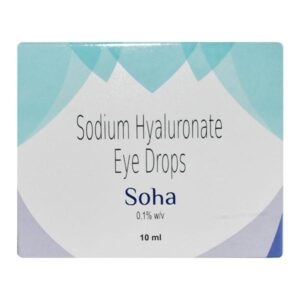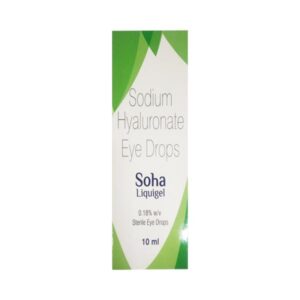HYALURONIDASE + EYE DROPS
Hyaluronidase: Hyaluronidase is an enzyme that is used as an adjunct to aid the absorption or dispersion of other drugs. It is commonly used in medicine to increase the spread and absorption of fluids or medications that are administered under the skin (subcutaneously) or into muscles (intramuscularly).
The mechanism of action of hyaluronidase is that it breaks down hyaluronic acid, a natural substance found in the body, which helps to create space between cells and tissues. By breaking down hyaluronic acid, hyaluronidase promotes the diffusion and distribution of other substances, allowing for improved absorption and dispersion into the desired tissue.
The dose of hyaluronidase varies depending on the specific indication and the medication being administered with it. The dosage is usually determined by a healthcare professional and is based on factors such as the type of drug being administered, the volume to be injected, and the desired rate of absorption.
As with any medication, hyaluronidase can cause side effects. Common side effects include redness, swelling, pain, or itching at the injection site. These local reactions are generally mild and transient. In rare cases, more severe allergic reactions such as difficulty breathing, rash, or hives may occur. If any serious side effects are experienced, medical attention should be sought immediately.
It is important to note that hyaluronidase should only be used under the supervision of a healthcare professional and as prescribed. The specific use and dosage information for hyaluronidase may vary based on the individual patient, so it is important to consult with a healthcare professional for personalized guidance.
Eye Drops: Eye drops are medications applied directly into the eyes for various purposes, such as treating eye conditions, relieving discomfort, or as part of eye examinations. They come in different formulations, including antibiotic, anti-inflammatory, lubricating, and anti-allergy eye drops.
The mechanism of action of eye drops depends on the specific medication. Some common types of eye drops include:
1. Antibiotic Eye Drops: These are used to treat bacterial eye infections. They work by inhibiting the growth of bacteria and clearing the infection.
2. Anti-inflammatory Eye Drops: These are used to reduce inflammation and swelling in the eyes. They work by suppressing the immune response that causes inflammation, providing relief for conditions like allergic conjunctivitis or uveitis.
3. Lubricating Eye Drops: These are used to alleviate dryness and discomfort in the eyes. They work by providing artificial tears to lubricate and moisten the eyes, helping to relieve symptoms of dry eye syndrome.
4. Anti-allergy Eye Drops: These are used to reduce itching, redness, and swelling caused by allergic reactions in the eyes. They work by blocking the release of histamine, a chemical involved in allergic responses.
The dosing of eye drops can vary depending on the medication and the specific condition being treated. Generally, they should be applied according to the prescribed frequency and quantity. It is important to follow the instructions provided by the healthcare professional or read the package insert carefully.
Some common side effects of eye drops may include:
1. Temporary stinging, burning, or irritation upon application
2. Blurred or hazy vision
3. Increased sensitivity to light
4. Watery eyes
5. Allergic reactions, such as swelling, redness, or itching
6. In rare cases, eye drops may cause systemic side effects, especially if they contain medications that can be absorbed into the bloodstream.
If any severe or persistent side effects occur, it is important to seek medical advice immediately. Additionally, remember to wash your hands before and after applying eye drops to maintain proper hygiene and to prevent further eye infections.


